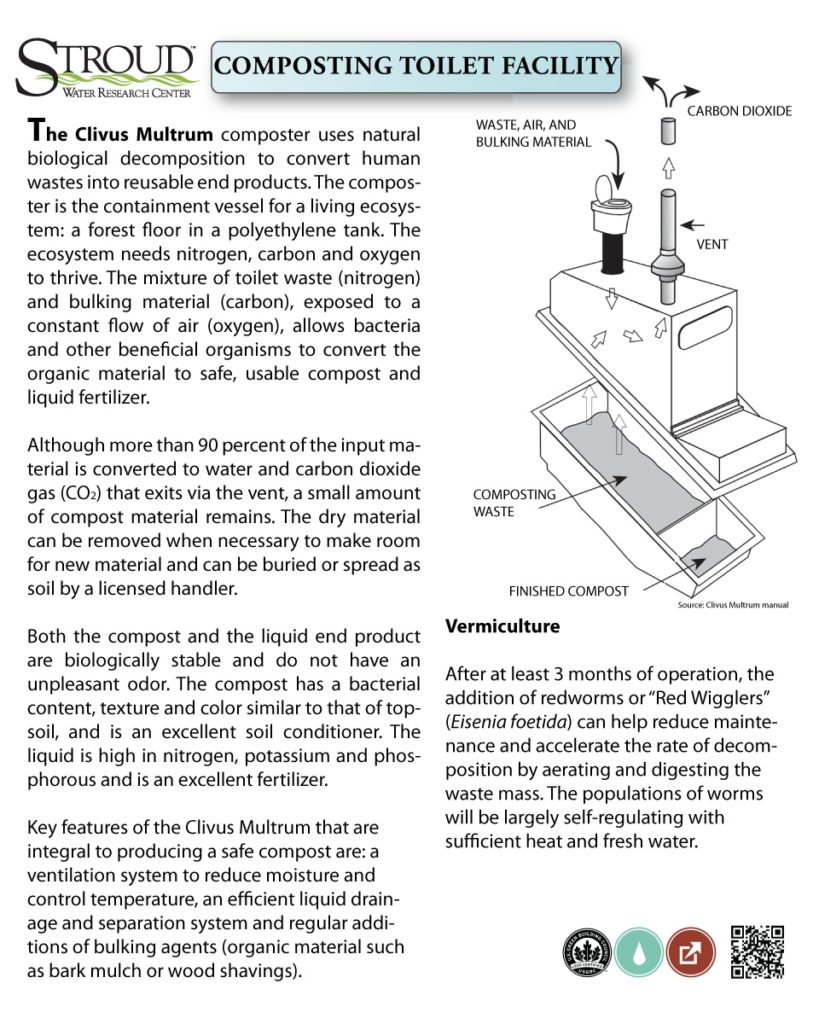Composting Toilets
Why would you want a composting toilet?
Our campus has a stream running through it. The Stroud Center’s scientists have been studying White Clay Creek for more than 40 years, and as our science has grown, so have our buildings and our staff.
When you have more people, you have more . . . well, you know.
We seek to utilize and treat water in a way that more closely mimics nature — leaving a smaller overall environmental footprint, better protecting the White Clay Creek.
Composting toilets and a water reuse system for flush toilets will reduce water use by more than 40% over conventional systems.
How do composting toilets work?
Other than the obvious ingredient, composting “humanure” requires good drainage, a constant flow of air, a high-carbon bulking material like bark mulch or sawdust, and time.
Adding redworms can help reduce maintenance and speed up the process.
What do we do with the finished compost?
If the process works as planned, more than 90% of the input material will be converted to water and carbon dioxide, leaving us with a small amount of dry material similar to topsoil. It can be removed as necessary by a licensed handler.

Sources: http://www.clivusmultrum.com/

